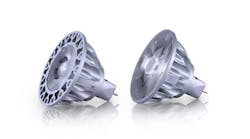Latest from Technology
DOE Releases New Recommendations for Testing and Reporting LED Luminaire Reliability
The U.S. Department of Energy’s Solid-State Lighting group and the Next Generation Lighting Industry Alliance (NGLIA) have published new recommendations for reporting and testing the reliability of LED lighting systems. Long lifetime ranks high on solid-state lighting's list of potential advantages, the DOE said in an e-mail. “But accurately predicting that lifetime is no easy matter, because – unlike most other lighting technologies – SSL has many different components, each one of which can cause system failure.”
In 2011, an industry working group under the auspices of DOE and NGLIA published the seminal report LED Luminaire Lifetime: Recommendations for Testing and Reporting. A revised version of that report –the latest in a series on LED product performance and reliability – was published last month by the NGLIA's LED System Reliability Consortium (LSRC), which is a spinoff of the earlier working group. Based on the progress made since 2011 in the understanding of SSL failures, the new report suggests directions for further work, and updates the previous recommendations for describing the life and reliability of LED luminaires.
Among the changes in the recommendations, the LSRC draws on the accelerated lifetime testing of RTI International, which led to the publication of the 2013 report Hammer Testing Findings for Solid-State Lighting Luminaires. The findings of that report not only reinforce the belief that the other luminaire components are far more likely to fail than the LEDs, but suggest that certain stress factors such as heat and humidity could accelerate those failures.
Because the importance of some lighting parameters is dependent on the particular application, the new LSRC report recommends that LED lighting products be classified into three reliability categories – lamp-replacement grade, standard grade, and specification grade – that cut across all market segments and apply to a range of parameters, from color stability to light output.
Color shift has been added to the recommendations as a consideration in defining lifetime, but only for applications where color stability is important. The color of general-illumination lighting products doesn't shift steadily, but runs in all directions, which means that the best one can do is describe the magnitude of the shift over a given interval.
The new recommendations are available here: LED Luminaire Lifetime: Recommendations for Testing and Reporting (PDF)









